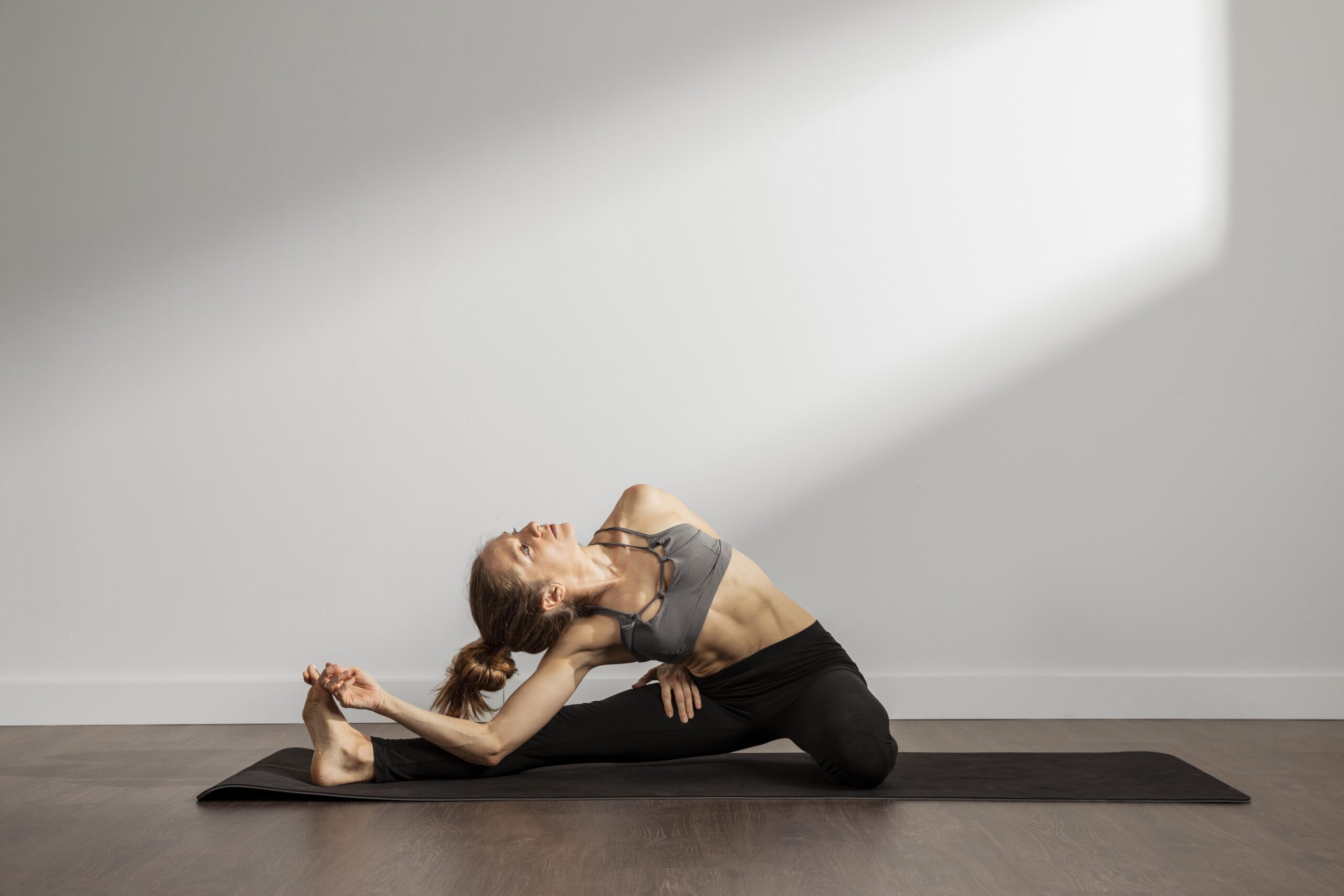Highlights (Index):
- What is Aerial Yoga?
- Benefits of Aerial Yoga
- Increased Flexibility and Strength
- Improved Balance and Coordination
- Spinal Decompression and Core Strengthening
- Stress Relief and Relaxation
- Enhanced Mood and Confidence
- Popular Aerial Yoga Poses
- Inversions (e.g., Hanging Downward Dog, Inverted Butterfly)
- Backbends (e.g., Aerial Cobra, Aerial Wheel)
- Hip Openers (e.g., Aerial Pigeon, Aerial Straddle)
- Restorative Poses (e.g., Aerial Savasana, Aerial Child’s Pose)
- Aerial Yoga Teacher Training
- Choosing the Right Program
- Curriculum and Certification
- Career Opportunities
A Complete Guide to Aerial Yoga
Are you ready to experience yoga like never before? Aerial yoga, also known as anti-gravity yoga, combines traditional yoga poses with the use of a soft fabric hammock suspended from the ceiling. This unique practice allows you to explore new dimensions of movement, deepen your practice, and experience a sense of freedom and weightlessness.
1. What is Aerial Yoga?
Aerial yoga involves performing yoga postures while partially or fully supported by a hammock. The hammock acts as a prop, providing support, allowing for deeper stretches, and enabling you to achieve poses that might be challenging on the ground. It’s a playful and exhilarating way to explore your practice and connect with your body in a new way.
2. Benefits of Aerial Yoga
Aerial yoga offers a wide range of physical, mental, and emotional benefits:
- Increased Flexibility and Strength: The hammock assists in achieving deeper stretches, improving flexibility and range of motion. It also challenges your muscles in new ways, leading to increased strength, particularly in the core, upper body, and legs.
- Improved Balance and Coordination: Balancing in the hammock requires focus and coordination, enhancing proprioception (body awareness) and improving overall balance.
- Spinal Decompression and Core Strengthening: Inversions in aerial yoga, such as hanging upside down, can help decompress the spine, relieving pressure on the vertebrae. Many aerial yoga poses also engage the core muscles, leading to a stronger and more stable midsection.
- Stress Relief and Relaxation: The gentle swaying motion of the hammock and the feeling of weightlessness can be incredibly soothing and relaxing. Aerial yoga can help reduce stress, anxiety, and tension, promoting a sense of calm and well-being.
- Enhanced Mood and Confidence: Aerial yoga can be a fun and empowering practice. Overcoming challenges and achieving new poses in the air can boost self-confidence and leave you feeling energized and uplifted.
3. Popular Aerial Yoga Poses
Here are some popular aerial yoga poses that showcase the versatility and fun of this practice:
- Inversions:
- Hanging Downward Dog: A classic inversion that decompresses the spine and stretches the hamstrings.
- Inverted Butterfly: A relaxing inversion that opens the hips and chest.
- Backbends:
- Aerial Cobra: A supported backbend that opens the chest and strengthens the back.
- Aerial Wheel: A deeper backbend that increases spinal flexibility.
- Hip Openers:
- Aerial Pigeon: A deep hip opener that releases tension in the hips and lower back.
- Aerial Straddle: A pose that stretches the inner thighs and hamstrings.
- Restorative Poses:
- Aerial Savasana: Relax and unwind in a supported Savasana (corpse pose) while gently swaying in the hammock.
- Aerial Child’s Pose: A comforting and restorative pose that promotes relaxation and introspection.
4. Aerial Yoga Teacher Training
If you’re passionate about aerial yoga and want to share its benefits with others, consider becoming a certified aerial yoga instructor.
- Choosing the Right Program: Look for a reputable aerial yoga teacher training program that is accredited by a recognized organization, such as Yoga Alliance. Consider the program’s curriculum, the experience of the instructors, and the overall philosophy of the school.
- Curriculum and Certification: A comprehensive aerial yoga teacher training program will cover topics such as:
- Aerial yoga techniques and safety protocols
- Anatomy and physiology
- Yoga philosophy and teaching methodology
- Modifications and variations for different students
- Business and marketing for yoga teachers
- Career Opportunities: As a certified aerial yoga instructor, you can teach in yoga studios, fitness centers, gyms, or even open your own aerial yoga studio. You can also offer private lessons, workshops, and retreats.
Aerial yoga is a dynamic and evolving practice that offers a unique way to experience the benefits of yoga. Whether you’re seeking to improve your flexibility, strength, and balance, or simply looking for a fun and challenging way to move your body, aerial yoga has something to offer everyone. So, embrace the challenge, take flight, and discover the joy of aerial yoga!
Important Links:


